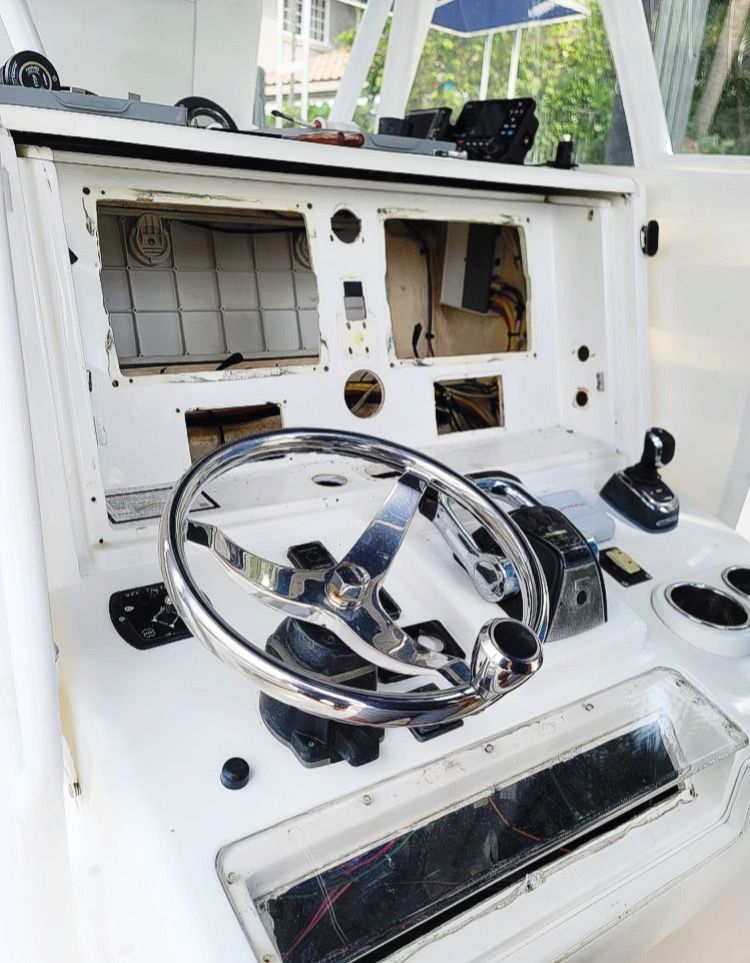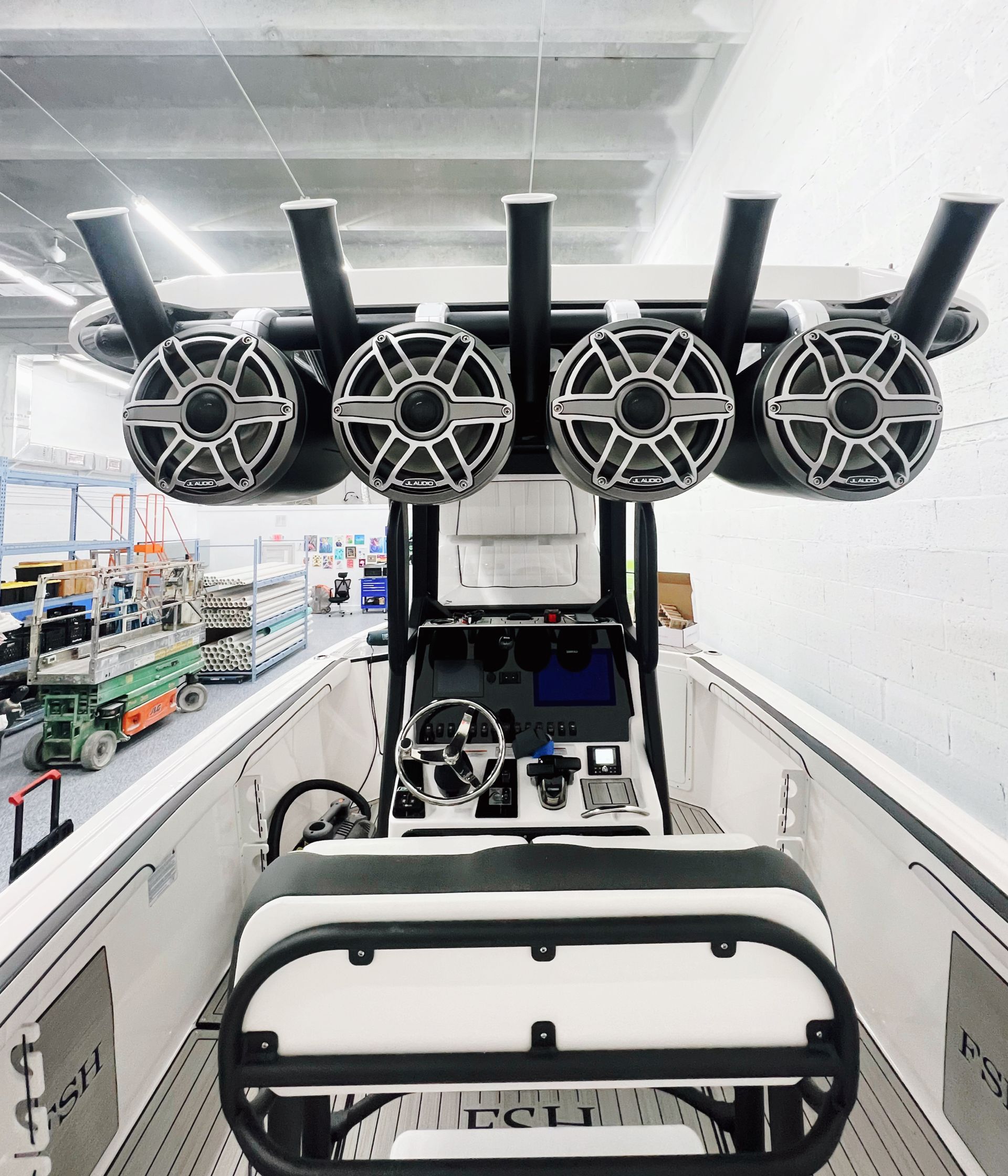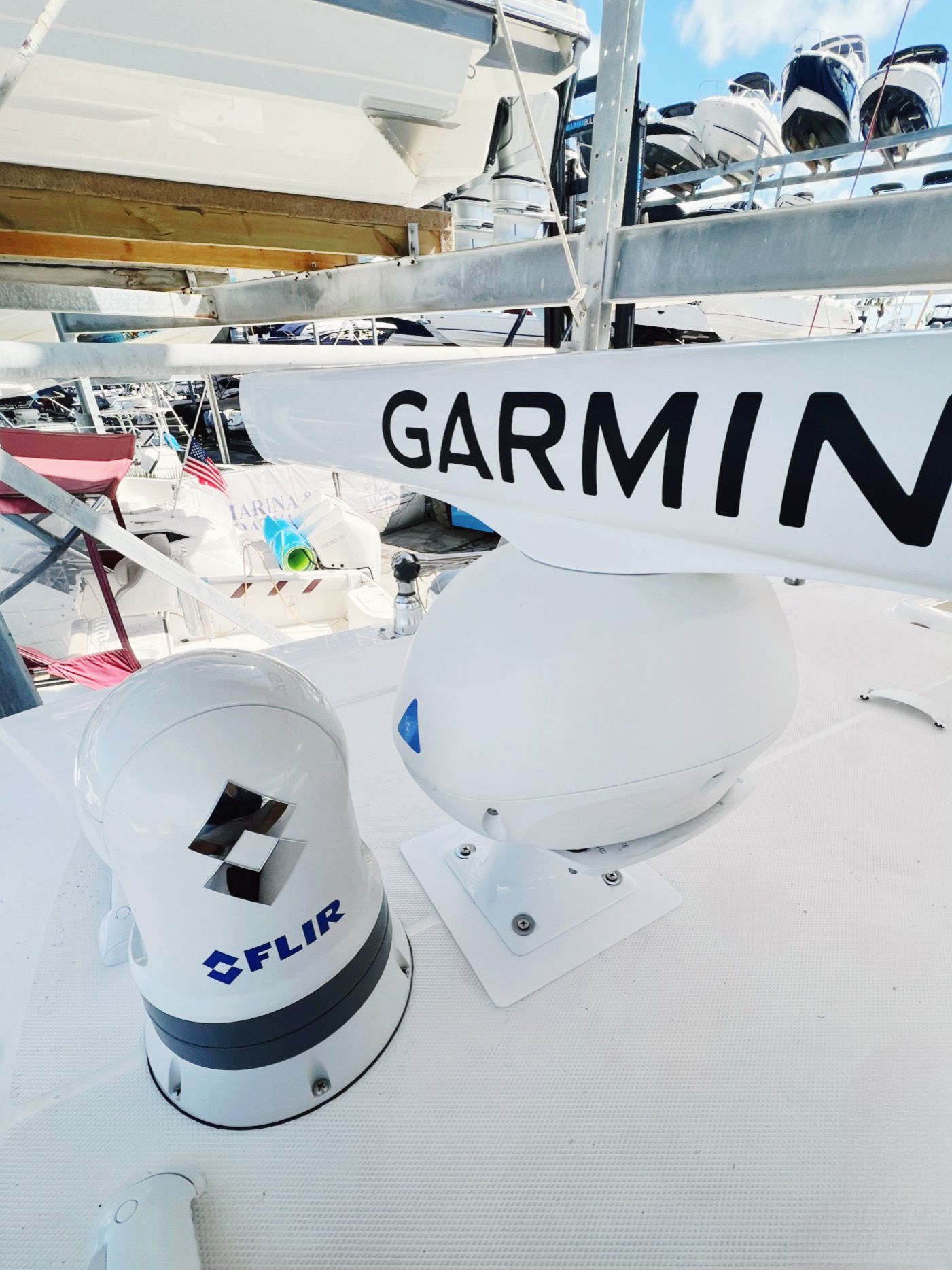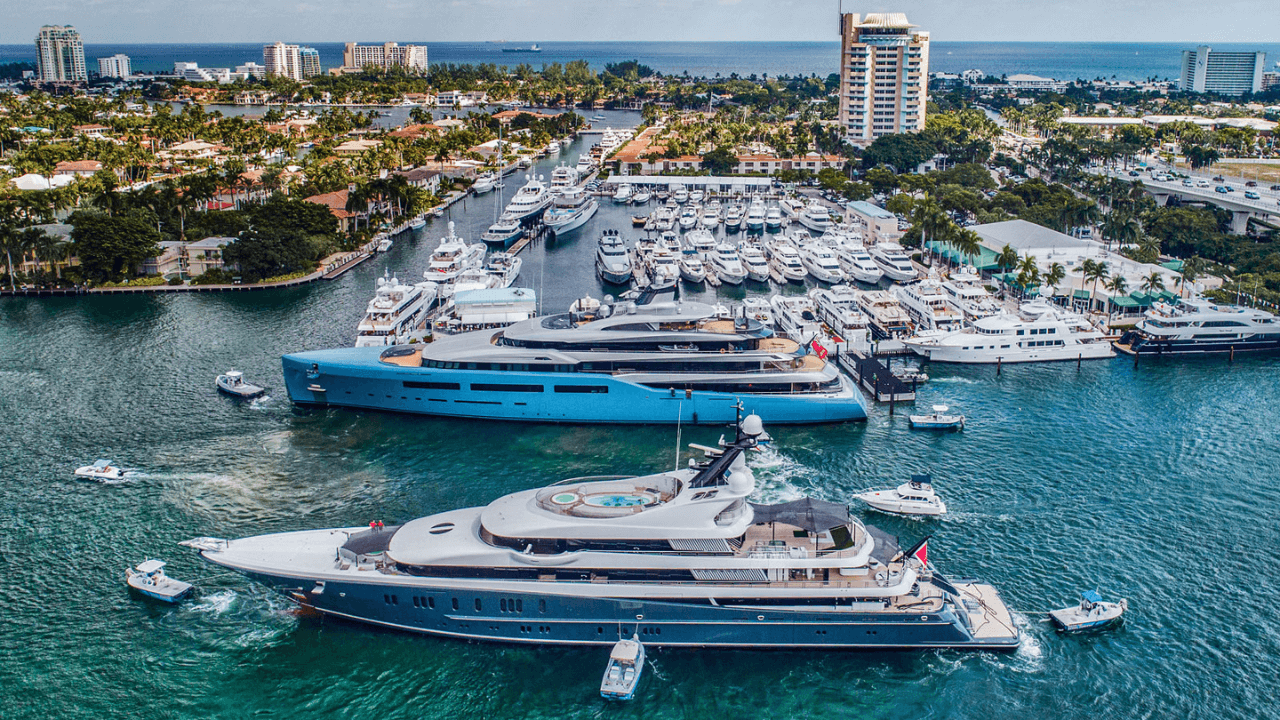7 Top Marine Electronics to Enhance Boating (2023)
In the world of boating, having the right marine electronics is key.
Precise navigational tools, reliable communication devices, and enhanced fish-finding equipment can significantly improve your experience on the water.
Today, the market is filled with advanced technology solutions, designed to make boating safer and more enjoyable.
However, with so many options available, choosing the most suitable setup can be challenging.
This article will present an overview of the best marine electronics currently available.
We will focus on their utility, usability, and how they can elevate your boating experience.
Top Marine Electronics To Enhance Boating
1. GPS Navigation System
Among the top marine electronics enhancing the boating experience, the GPS navigation system stands paramount.
The GPS, or Global Positioning System, is a satellite-based tool that helps locate the exact geographical position of your vessel at any time, anywhere globally.
Not only does it provide location details, but today’s advanced GPS systems also display accurate speed, travel direction, and computed ETA at the destination point.
For mariners, having a reliable and accurate navigation system is critical for safety as it ensures smooth sailing by avoiding dangerous and restricted areas.
One of the key benefits of a GPS navigation system is that it greatly reduces the risk of getting lost at sea by providing real-time updates on coordinate positions, course changes, and potential hazards.
This is due to the GPS’s constant communication with satellites orbiting the Earth, fetching accurate, near real-time data.
This technology assists in navigational planning , taking into account the water depth, tide forecasts, underwater obstructions, and appropriate berthing or anchoring areas.
Moreover, many advanced GPS systems come integrated with a built-in chartplotter to view detailed marine cartographic data in a user-friendly interface.
Modern marine GPS systems can store a vast number of waypoints and routes , making it easy to plan and track your course precisely.
Additionally, when paired with other devices like a radar or an AIS, the GPS system can provide a much broader perspective of the surrounding marine environment.
This advanced degree of marine intelligence allows for better decision-making, enhancing overall boat control for a safer, more enjoyable journey.
As such, every serious mariner should consider adopting an advanced GPS navigation system as part of their standard marine electronics setup.
This informative video will guide you on how to effectively use a chartplotter for boat navigation.
From understanding the various touch commands and button layouts to interpret the different symbols on the chart display, this video will surely prove beneficial for novice and experienced boaters alike.
Thus, with the right knowledge and tools, mastering the use of GPS navigation systems for safer and more efficient boating is within every mariner’s reach.
2. Fish Finder/Depth Finder
The Fish Finder/Depth Finder is a crucial piece of marine electronics for any avid boater, especially those who are into fishing.
This device uses sonar technology to detect and display underwater objects , ranging from schools of fish to underwater structures.
Thus, having a decent depth finder on your boat effectively enhances your boating and fishing experiences by pinpointing the locations with the most potential.
The Depth Finder also provides you with a view of the sea bottom, thus aiding in navigational decisions.
Fish Finder/Depth Finders enable you to visualize the world beneath your boat, providing useful insights into the marine environment.
This becomes particularly important when you sail in less familiar waters where hazards may be hidden below the surface.
It allows you to navigate safely, avoid obstacles and thereby protect your boat from potential damage.
Moreover, it’s vital to note that these devices come in various forms and functionalities, reflecting advancements in electronics and technology.
Today’s fish finders are equipped with features like GPS integration , high-resolution screens and advanced sonar capabilities that not only locate fish but also provide valuable information on the water temperature and depth.
Furthermore, some high-end models may even include radar and other navigation aids.
Along with aiding in fishing and navigating safely, the Fish Finder/Depth Finder can mean the difference between a successful or unsuccessful boating expedition.
The ability of these devices to predict the presence of fish and indicate the ideal fishing spots enhances their practical value for the fishing enthusiasts.
It takes the guesswork out of fishing, making it more of a science than luck-based activity.
The Depth Finder, meanwhile, not only keeps you aware of the underwater hazards but also offers crucial data for navigating in deeper seas or during low visibility conditions.
Therefore, a Fish Finder/Depth Finder is truly a multifaceted tool that vastly enhances your overall boating experience .
Given their diverse functionalities and advancements in technology, they are undeniably one of the top marine electronics to consider for your boat.
3. VHF Marine Radio
A VHF Marine Radio is an essential piece of equipment, whether you’re using your boat for fishing, sailing, or just pleasure cruising.
It operates on very high frequency, hence the abbreviation VHF , to provide two-way communication between vessels, connect your vessel to harbors and marinas, and also facilitate communication with search and rescue services.
Regardless of the size of your boat, having a VHF radio onboard can be a literal lifesaver.
While cellphones might seem like a good communication solution, their range is limited, especially when you’re out on the water.
A VHF Marine Radio offers a more reliable and wider range of communication than a cellphone.
A mobile phone’s reception can be quite sketchy at sea.
On the other hand, a VHF Marine Radio offers a more secure connection suitable for marine usage.
In addition to that, a lot of VHF Marine Radios come with enhanced features like distress signalling, GPS integration, and weather alerts, which are absolutely essential for your safety at sea.
In case of any emergencies, the VHF Marine Radio can directly establish contact with the coast guard and other boats nearby.
It also plays a crucial role in day-to-day communications, and in preventing collisions at sea.
By watching this video, you can get a detailed understanding on how to properly operate a VHF Marine Radio and understand its variety of functions.
It’s an excellent resource for beginners as well as seasoned boaters who could use a refresher on this indispensable tool.
When selecting a VHF Marine Radio, consider factors like its power output, whether it’s fixed mount or handheld, and the available features.
These could range from basic models to high-end units with advanced capabilities.
Overall, a VHF Marine Radio is a non-negotiable addition to your boat’s electronic toolbox.
It keeps you safe and informed, ensures constant communication, and delivers crucial weather updates.
4. Radar System
As an essential maritime electronics tool, the Radar System significantly improves the safety and efficiency of boating.
Primarily, the Radar System works by sending out a radio wave signal which then bounces off objects in its path and returns a signal to the system.
The time it takes for the signal to return allows the system to calculate the distance to the object, offering real-time, precise object location.
Therefore, it becomes a vital tool for navigating in thick fog, night-time sailing or in any adverse weather conditions that may obstruct visibility on water.
Particularly, captains navigating in high-traffic waters find the Radar System indispensable as it assists in identifying other vessels and obstructions, preventing any unexpected collisions.
Indeed, this identification efficiency is possible because the Radar system offers excellent detection of small, hard-to-see targets that can easily get lost in the clutter on a busy waterway.
All these factors ensure that the captain remains in control, regardless of the external conditions .
Another unique feature of the Radar System is its ability to provide target velocity information .
This data about the speed and direction of other vessels in the vicinity is crucial to avoiding potential collisions during navigation.
Also, contemporary Radar Systems go a step further to incorporate technologies like Automatic Radar Plotting Aid (ARPA) and Mini Automatic Radar Plotting Aid (MARPA) .
These advanced features are designed to track multiple targets simultaneously, calculate their speed, determine the risk of collision, and suggest evasive maneuvers .
The utilization of this technology significantly increases the navigational safety and accuracy of any boat.
Moreover, some Radar Systems also offer the convenience of overlaying radar images on your chartplotter for a more streamlined view.
Through this setup, you can correlate the radar image with the chart’s data, providing a simplified yet comprehensive illustration of all objects near your vessel.
Thus, equipping your vessel with a Radar system essentially acts as an extra set of eyes on the water .
It fills in the visual gaps and provides essential data when visibility is compromised, ensuring you have all the necessary tools to navigate safely and confidently.
5. Automatic Identification System (AIS)
The Automatic Identification System (AIS) is a state-of-the-art marine tracking technology that greatly enhances safety when on the water.
When installed on a ship, an AIS device periodically transmits the vessel’s position and other relevant information to neighboring boats, marine traffic control centers and satellites.
This occurrence provides real-time situational awareness and improves navigational safety both during the day and at night.
Furthermore, the AIS allows you to detect and track other vessels in your proximity, and provides you with their dynamic and static information.
The dynamic information includes the vessel’s speed, heading and rate of turn, while the static information refers to the vessel’s name, dimensions, type, etc.
This means, with the AIS, you are always abreast of what is going on around your vessel, thus, minimizing the chance of accidents and mishaps on the water.
Apart from enhancing safety, AIS also facilitates efficient marine communication.
Particularly, you can use the AIS system to send and receive short, safety-related messages to and from other ships or shore-based stations, alerting them of any dangers or critical situations.
In addition, vessels equipped with AIS are constantly monitored by Vessel Traffic Services (VTS), leading to increased overall security.
Notably, every AIS device contains a GPS receiver, which ensures precise and dependable position information at all times.
Now, for a quick exploration of how this technology works and its importance, there’s a video worth watching:
In this video, the intricate workings of the AIS are clearly elucidated. The understanding you gain will give you a better appreciation of its invaluable benefits .
Moreover, you’ll become versed in how to use the system to its full potential, optimizing your safety and communication while on the water.
Having an AIS on your boat, therefore, is not a luxury, but a necessity. It’s an investment that guarantees you peace of mind every time you set sail.
AIS is, undoubtedly, among the top marine electronics to consider for an enhanced, safer and worry-free boating experience.
6. Chartplotter/Multifunction Display
Marine electronics have come a long way in recent years and this is particularly evident when it comes to Chartplotters/Multifunction Displays (MFDs).
In the world of boating, these devices are prime examples of how technology has significantly enhanced the boating experience allowing sailors to navigate with greater precision and confidence.
The primary function of a chartplotter is to provide a detailed map of the body of water that one is navigating.
This essentially makes these devices the equivalent of GPS navigation systems for water bodies.
The map shown on the display is highly detailed showing not just the layout of the water body but also any features that might be present underneath the water, such as coral reefs, sunken ships, or sudden changes in the water depth.
A Chartplotter/Multifunction Display is a crucial tool for sailors, providing essential information through detailed maps of underwater features whilst navigating water bodies.
This key information proves to be invaluable in avoiding any obstacles beneath the surface that might pose a threat to the vessel.
Moreover, chartplotters can be connected to various other electronic devices aboard the vessel, introducing a multitude of additional functionalities.
When connected to a fish finder, for instance, the chartplotter can indicate the locations where fish are likely to be present thereby aiding in fishing expeditions.
Furthermore, when connected to an Automatic Identification System, it can provide real-time information about other vessels in the vicinity, which is crucial in preventing collisions and ensuring safe navigation especially in crowded waters.
Most modern chartplotters also come with a built-in GPS receiver that can provide real-time information on the vessel’s location, speed, and heading, making navigation even easier and more precise.
Moreover, the data shown on the MFD can be customized based on the sailors’ requirement whether it’s information about wind speed, water temperature, or the status of the autopilot system.
One more unique feature of modern chartplotters is their ability to overlay radar data onto the chart.
This radar overlay helps match up what one sees on the radar with what one sees on the chartplotter , making it much easier to identify and understand what is out there in the water.
In essence, a Chartplotter/Multifunction Display is a robust and versatile tool that provides a variety of invaluable information to sailors, significantly enhancing the boating experience.
7. Autopilot System
One of the most impactful marine electronics to improve your boating experience is the Autopilot System .
This sophisticated technology is designed to automate navigational functions , thus aiding the operator in steering the vessel, especially over long distances.
Primarily, an Autopilot System works by receiving data from multiple sensors, ranging from gyros to wind speed devices.
The interpreted data is then used to control the rudder and maintain the boat on a predetermined course.
Such systems come in different variations, ranging from simple belt-driven models fit for smaller boats, to robust hydraulic systems for larger, more sophisticated vessels.
A standout feature of autopilot systems is their ability to adapt to varying sea conditions, hence significantly reducing the need for manual steering.
An Autopilot System allows for a more relaxed and enjoyable boating experience as it significantly reduces the focus required on steering, making long distance voyages less exhausting.
This proves beneficial, especially on more extended trips where the consistent need for steering can be both tedious and tiring.
Additionally, it greatly improves navigation efficiency by maintaining a stable course, ultimately saving fuel.
High-end models also come with integrated GPS that enables them to follow complex routes, giving you ease of mind on voyages through unfamiliar waters.
A properly functioning autopilot system requires regular calibration to ensure it works accurately so regular maintenance checks are a must.
While they can be somewhat expensive, the benefits of an Autopilot System make it a worthy investment for any serious boater looking to enhance their boating experience.
For those interested in learning more about this technology, the embedded video provides an in-depth look at how an autopilot system works.
It also offers a useful guide on how to set up such an advanced navigation system on your own boat.
The Bottom Line
To encapsulate this discourse, it is of utmost importance to have the right marine electronics onboard for any type of sea expedition.
Systems like GPS navigation, fish finder/depth finder, VHF marine radio, radar system, automatic identification system (AIS), chartplotter/multifunction display, and autopilot system are essential for safe, efficient, and effective marine navigation.
They contribute to easier decision-making, better communication, efficient navigation, and safety at sea.
Investing in these advanced marine electronics can lead to a significant upgrade in marine experiences, ensuring that each journey on the water is a seamless and enjoyable one.
Contact Us
Contact Us
Recent Posts
CONTACT US
Looking to upgrade your marine electronics?
With more than 25 years of experience, we can help you get started today!




